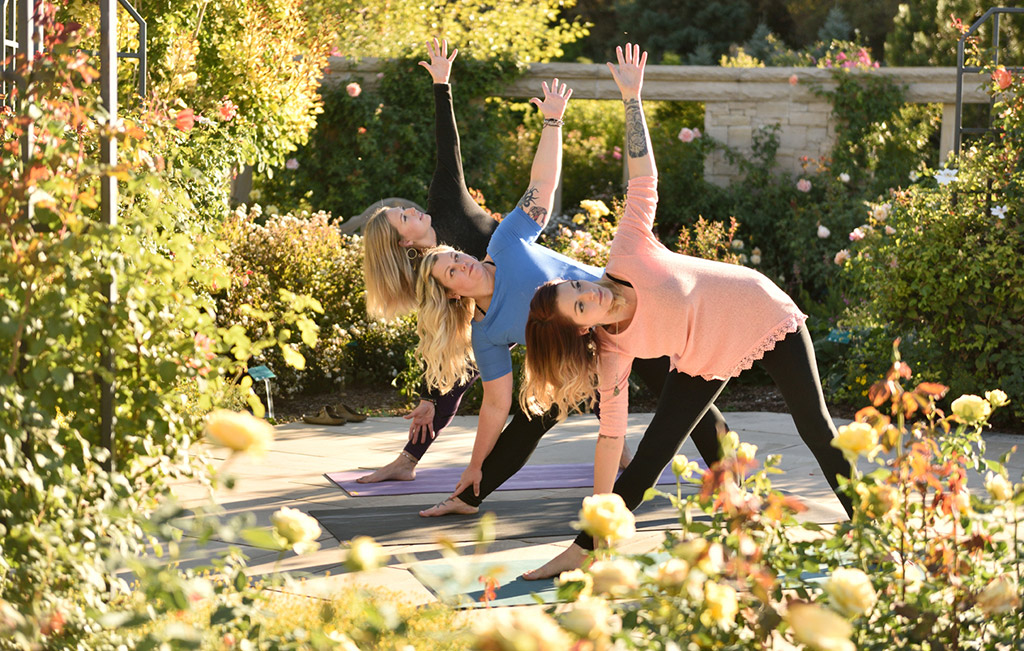
The yoga tradition has long encouraged respect for the world around us. This includes humans, other animals, plants and natural resources in general. The first of the Eight Limbs of Yoga is yama, a framework for how we interact with the world around us. Ahimsa (non-harming), asteya (not taking what isn’t offered), and aparigraha (non-greed) in particular, speak to yoga’s dedication to caring for our Earth. This Earth Day, we’re celebrating 37 years of providing tools for yoga practice, including a focus on sustainable yoga props.
Hugger Mugger’s sustainable philosophy has two strands. First, we continue to develop newer, sturdier sustainable yoga props from non-toxic, renewable materials. Second, our quality is unassailable. Our products will last for years, if not decades, defying the “disposable culture” credo.
What Is Earth Day?
The modern environment movement began on April 22, 1970. The very first Earth Day, conceived by then-Senator Gaylord Nelson, drew 20 million activists from all over the U.S. who took to streets, parks and university campuses to protest environmental degradation and advocate for environmental stewardship. Forty-eight years later millions of people in 192 countries all around the world celebrate Earth Day.
The theme of this year’s Earth Day is “Invest in Our Planet.” According to the Earth Day website, this year’s festivities will take place online, making them accessible to just about everyone. Topics will include “climate restoration, regenerative agriculture, environment and social justice, supply chain resilience, plastic pollution, resource scarcity, food security, the green economy, biodiversity restoration, universal climate literacy, and more while panelists range from public and private sector leaders to activists, scientists, influencers and beyond.” You can find a full schedule on the site.
Building Blocks for Our Sustainable Yoga Props
At Hugger Mugger, we began exploring alternatives to plastics in our sustainable yoga props in the early 2000s. While we already made lots of products that don’t include any sort of plastics—including yoga bolsters and meditation cushions, wood blocks, and cotton and hemp straps—we’ve made it a priority to explore and develop sustainable materials for our other products too.
Natural Rubber Yoga Mats
Rubber: Native to South America, rubber trees (Hevea brasiliensis) produce latex, the source material for all natural rubber products. While more than half the rubber used in manufacturing today is synthetic, from petroleum sources, we use only natural, tree-sourced, Malaysian rubber in our mats. Rubber is a long-lasting material—rubber tires generally last 50,000 miles or more. So you can plan on a Para Rubber Yoga Mat supporting you through many, many Downward Facing Dogs.
Our rubber-based yoga mats include:
Renewable Cork Products
Cork: Cork is solid, impermeable, stable and recyclable. Cork trees continue to grow even after their bark has been harvested and can live up to 200 years. The cork oak grows only in seven Mediterranean countries—Portugal, Italy, Spain, France, Algeria, Morocco, and Tunisia. The cork harvesting industry employs more than 100,000 people.
Our cork-based products include:
Sustainable Yoga Mats from TPE
Thermoplastic Elastomer (TPE) is the base material for our Earth Elements Yoga Mats. TPE contains no PVC and uses no toxic materials in its production. TPE also has no rubber, meaning it’s perfectly safe for those with latex sensitivities. Thermoplastic Elastomer has a closed-cell structure, so liquids cannot penetrate it, making mold and mildew a non-issue. TPE requires less energy to produce than other mat materials and is fully biodegradable. Because they are biodegradable, these mats will eventually break down, but with proper care you can enjoy your Earth Elements Mat for many years. Because it’s designed to biodegrade, TPE will break down if you leave it exposed to the hot sun—for example, in your car for long periods of time. Storing it in a mat bag eliminates this problem.
Our TPE-based mat:
Jute Yoga Mats
Technically a grass, bamboo is considered to be the fastest growing plant on earth. Some species of bamboo have been recorded as growing four feet in 24 hours. A bamboo pole, once cut, can regenerate its mass in six months. In addition, bamboo is exceptionally strong, is water resistant and has natural antibacterial properties.
Nicknamed the “Golden Fibre,” Jute is a natural fiber plant grown primarily in India, Bangladesh and China. Highly versatile, jute combines breathability with high tensile strength. Jute is second only to cotton as the world’s most popular fiber for clothing, furniture coverings and other fabric uses. Jute has natural insulating, antistatic and antimicrobial properties and is completely biodegradable. And as a natural rain-fed crop, jute needs little to no fertilizers.
This product contains jute fiber:
Bamboo Yoga Blocks
Our Bamboo Yoga Blocks are constructed with a hollow core, making them both sturdy and lightweight.
Here’s a page that lists some of our favorite sustainable yoga props.
